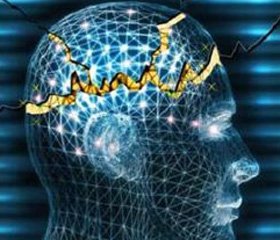Международный неврологический журнал 3 (57) 2013
Вернуться к номеру
Neurometabolic effects of repetitive transcranial magnetic stimulation at patients with epilepsy by the use of proton magnetic resonance spectroscopy
Авторы: Evstigneev V.V., Kistsen V.V.
Рубрики: Неврология
Разделы: Клинические исследования
Версия для печати
Introduction. The safety, tolerance and side-effects of drugs used remain a significant problem in treating epilepsy. Often enough therapy negative consequences conditioned by side effects can prevail over a positive result of arresting attacks. Most of anticonvulsants affect central nervous system, psychic sphere and cognitive functions, not seldom transform clinical disease manifestations, and change electrophysiological indices, complicating epilepsy clinical course. The frequency of side-effects and complications of antiepileptic therapy is high enough and comprises 7-25% according to the data of different authors.
Thereby it is necessary to search for contemporary strategies using AEP combinations with other non-drug means, physical factors. This trend starts to be actively investigated in experimental and clinical neurology. Some news technologies are develops today to reduce seizures and to improve quality of life in resistant epilepsy: DBS, VNS, tDCS and rTMS. Repetitive transcranial magnetic stimulation (rTMS) is a perspective method to reduce seizures at resistant epilepsy. Mechanisms of rTMS action are active researched.
According to our previous research repetitive transcranial magnetic stimulation is able to change the structure and the duration of attack phases in maximal electroshock test, pentylenetetrazol and picrotoxin seizure models. The most effective regimen of magnetic stimulation is the frequency of 1Hz intensity 20% of maximal magnetic induction. The recent study was designed to evaluate the neurometabolic effect of single session of low-frequency subthreshold repetitive transcranial magnetic stimulation over temporal lobe of epileptogenic hemisphere.
Material and Methods. Seventeen patients with resistant epilepsy (mean age 27.1±2.1 years) were enrolled in a prospective single-blind, randomized study [sham (n=5) vs. real (n=12)]. The results of clinic, anamnestic, encephalographic and neuroimaging investigations of those epileptic patients were studied. RTMS (1 Hz, 20% MMI intensity of ring coil) was performed during ten minutes over the temporal lobe projection with “focusing” over hippocamp according our study of mathematic rTMS modelling. Hippocampal and external temporal brain regions bilaterally were investigated by multi-voxel proton magnetic resonance spectroscopy (1H-MRS) before and after rTMS. For statistical manipulation, one used algorithms of Statistica 6.0 programme.
Results. Our results showed a significant reduction of seizure frequency after real rTMS sessions (p<0.05). These clinical changes were correlated with increases in N-acetylaspartate (NAA)/Cholin (Cho)+Creatin (Cr) ratio in the ipsilateral hippocamp region after single rTMS session (p=0.023). We found a positive correlation between increases NAA/Cho+Cr ratio levels after rTMS at both hippocampus and remission of epilepsy after complex therapy (r=0.7, p=0.037). For the sham group, there were no any significant changes in NAA/Cho+Cr ratio levels (p>0.05).
Conclusions. New technology of low-frequency rTMS delivered into temporal lobe leads to significant antiepileptic effect at patients with resistant epilepsy. That effect correlated with neurometabolic effect in deep brain regions and can predict course of epilepsy after complex therapy with low-intensity rTMS. According to modern conceptions and results of experimental investigations, the mechanism of modulator inhibitory changes is connected to the rTMS possibility to cause a long-term synaptic depression or a long-term potentiation. These long lasting phenomena, probably, underlie anticonvulsive effects of low-frequency magnetic stimulation.

